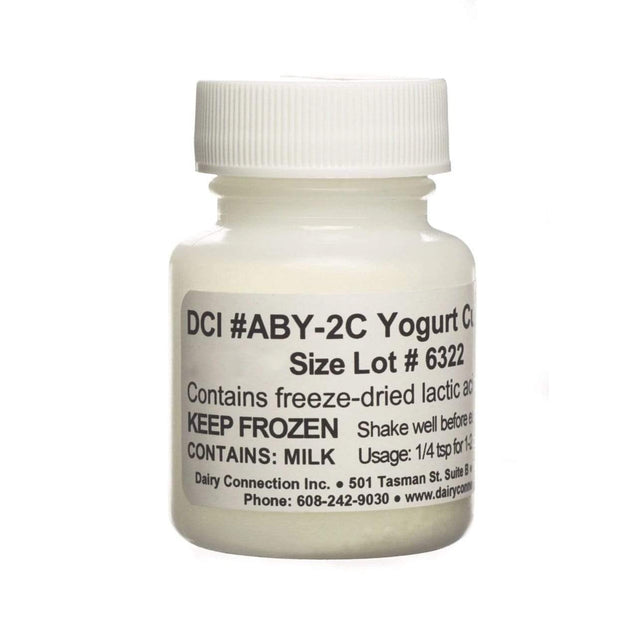Best Yogurt Culture | Learn the Best Yogurt Starter Culture for You – Culture for Health
– | / Save up to % keep Save up to % keep Sale Sold Out In Stock
Who knew there were so many types of yogurt starter? There are actually many different types of yogurt starter cultures, from Greek to Bulgarian to vegan.
All of these contain probiotic bacteria and will culture a variety of milk if proper care is taken. So how do you know which one to choose for your batch of homemade yogurt starter cultures?
Yogurt starter cultures come in a variety of flavors and consistencies, and your choice ultimately comes down to personal preference. To help you decide which yogurt starter is best for you, we’ve outlined the main characteristics of each yogurt starter below.
Culture types of yogurt starter
The following table contains yogurt cultures sold by Cultures for Health. Different combinations of bacteria create the unique characteristics of each yogurt culture.
Traditional flavor yogurt starter culture
add to cart
Flavor and consistency:
tart flavorthickest concentration
Persistence and culture temperature:
Direct set (disposable)Thermophilic (requires yogurt maker)
summary:
Easy-to-use yogurt starter. There is no need to maintain a long-term culture. Use only when necessary. It has a similar consistency to store-bought yogurt, but with an extra tangy flavor.
Bulgarian yogurt starter culture
add to cart
Flavor & consistency:
mild tastethicker consistency
Persistence and culture temperature:
Heirloom (reusable)Thermophilic (requires yogurt maker)
summary:
Buy your starter once and use it forever as long as you maintain your culture. It is very similar to commercial yogurt and is very kid-friendly.
greek yogurt starter culture
add to cart
Flavor and consistency:
Slightly tangy flavorthicker consistency
Persistence and culture temperature:
Heirloom (reusable)Thermophilic (requires yogurt maker)
summary:
The taste is similar to store-bought Greek yogurt, but better. If you keep your starter alive, you can make endless amounts of Greek yogurt. You may need to strain it to make it as thick as store-bought yogurt.
Heirloom Yogurt Starter Culture
add to cart
Flavor and consistency:
We sell four distinctive yogurts together, so you can try them all.Viili: Mild flavor, thin and smoothFilmyölk: Mild, slightly cheesy, rich and smoothMazzoni: Slightly sour, rich, custard-like taste
Piima: Quite mild flavor, thick and jelly-like.
Persistence and culture temperature:
Heirloom (reusable)Mesophilic (cultured at room temperature)
summary:
We have put together 4 types of Nordic yogurt. Each one is unique and delicious in its own way, but the biggest draw is that these yogurt cultures are incubated at room temperature. That means you have endless yogurt on your counter and no need for a yogurt maker.
Mild tasting yogurt starter
add to cart
Flavor and consistency:
mild tastethickest concentration
Persistence and culture temperature:
Direct set (disposable)Thermophilic (requires yogurt maker)
summary:
Easy-to-use yogurt starter. There is no need to maintain a long-term culture. Use only when necessary. It has the same consistency and taste as commercial yogurt without the use of chemicals or preservatives. Child friendly.
Kosher Yogurt Starter: Mild Flavor
add to cart
Flavor and consistency:
mild tastethickest concentration
Persistence and culture temperature:
Direct set (disposable)Thermophilic (requires yogurt maker)
summary:
Very similar to our Direct Set Mild Starter, only kosher. Easy-to-use yogurt starter. There is no need to maintain a long-term culture. Use only when necessary. It has the same consistency and taste as commercial yogurt without the use of chemicals or preservatives. Child friendly.
vegan yogurt starter culture
add to cart
Flavor and consistency:
Retains the flavor of cultured milkThin so you need to add thickener
Persistence and culture temperature:
Direct set (disposable)Mesophilic (cultured at room temperature)
summary:
This starter allows you to culture a variety of non-dairy milks to make vegan yogurt. The finished yogurt is rich in probiotics, but is still thin and requires a thickener.
What is yogurt starter?
Yogurt starter is a carefully balanced blend of lactose-consuming bacteria. This blend of bacteria converts the lactose in milk to lactic acid, giving yogurt its classic, delicious tangy taste.
The production of lactic acid lowers the pH of milk, increases the shelf life of yogurt, and changes the texture of yogurt by changing the protein structure. Each yogurt starter has a unique blend of bacteria that creates a different flavor and consistency.
Taste of yogurt culture
As mentioned earlier, yogurt’s distinctive tangy taste is due to the acidification of the milk during fermentation. The flavor of yogurt can range from mildly sour to very astringent, depending on the culture used and the length of incubation. Longer fermentation times usually result in a sour yogurt.
Consistency and texture of yogurt starter cultures
Homemade yogurt varies in consistency and texture. The yogurt culture used, the incubation temperature and time, and the type of milk used all affect the viscosity and texture of the yogurt.
Yogurt can be thin enough to drink, or thick enough to hold its shape on a plate. For very thick Greek-style yogurt, you may need to drain the whey. Yogurt can also be ropey, creamy, or gelatinous. These variations are mainly due to the type of bacteria in the culture and can be seen in more detail in the comparison table below.
Persistence: Direct Setting VS. Traditional Yogurt Culture
Direct set = disposable culture
Add fixed or disposable cultures directly to a batch of milk to produce a single batch of yogurt. With some care, a direct-set starter can be re-incubated two or three times by using some of the yogurt as starter for a new batch. However, you will eventually need to use a new powdered starter. Non-dairy milk usually cannot be recultured.
Heirloom = reusable culture
Reusable and heirloom cultures can be propagated indefinitely. With each batch, a portion of the yogurt is saved and added to a new batch of milk to make more yogurt. To maintain bacterial vitality, reusable cultures must be grown at least once every 7 days.
Yogurt starter culture temperature
thermophilic culture = likes heat
Thermophilic means liking heat. This type of culture is added to heated milk and incubated for 5 to 12 hours. Thermophilic cultures usually produce thicker yogurt than those from mesophilic cultures. Thermophilic cultures require a consistent heat source to grow properly. A yogurt maker is most commonly used for this, but there are ways to culture without a yogurt maker (one way is to use a crockpot!).
Mesophilic culture = moderate affection
Mesophilic means medium-loving, meaning mesophilic cultures grow best at room temperature (approximately 70° to 77°F). For mesophilic cultures, there is no need to preheat the milk. The culture is added to cold milk and incubated at room temperature, usually for 12 to 18 hours. Mesophilic cultures typically produce thinner yogurt than those from thermophilic cultures.
Want to learn more about yogurt starter culture?
{“themeColor”:”#7892a4″,”iconColor”:”#7892a4″,”showLogo”:false,”topBottomPosition”:10,”rightLeftPosition”:10,”iconSize”:”large”,”iconCustomSize”:64 ,”position”:”top left”}



